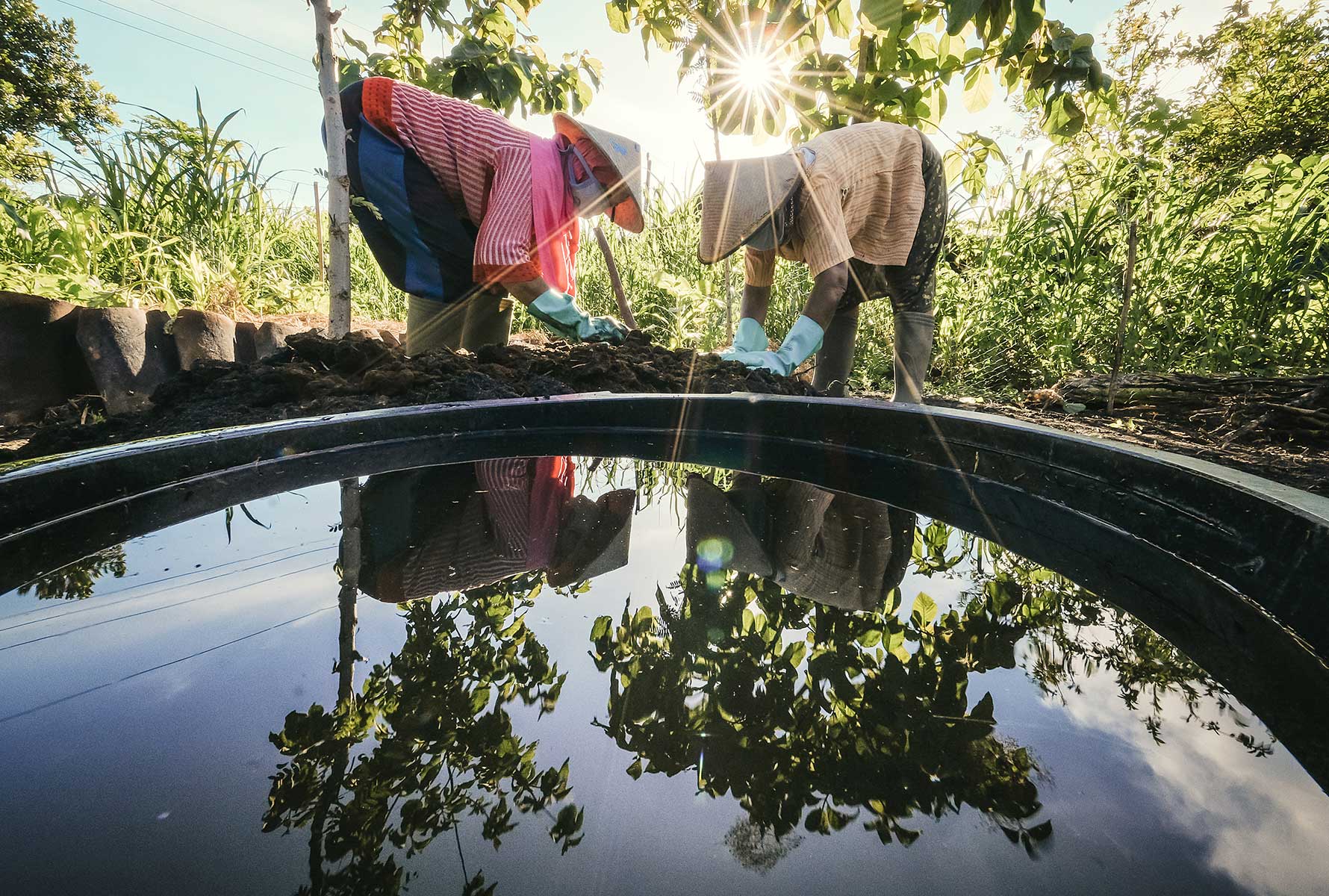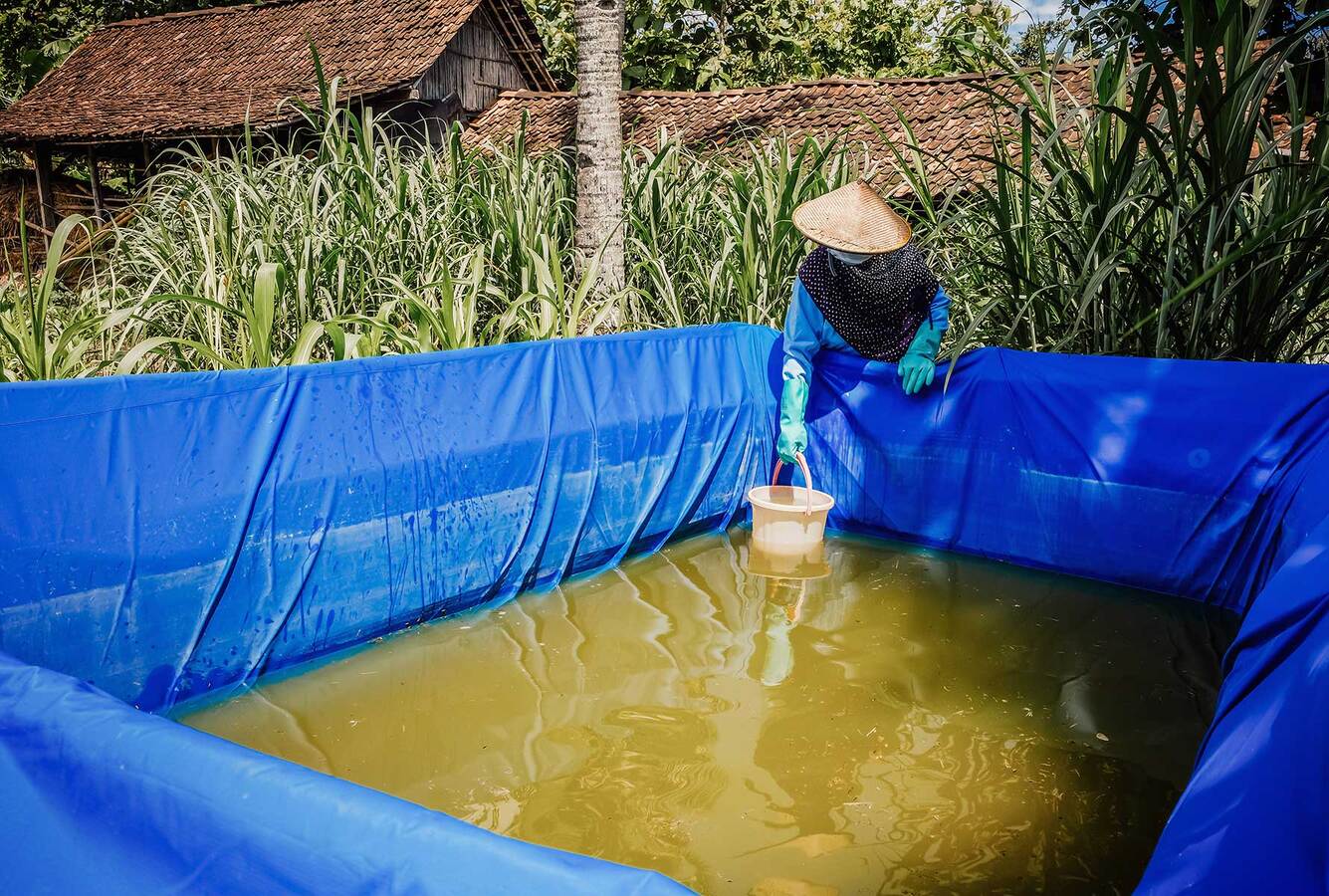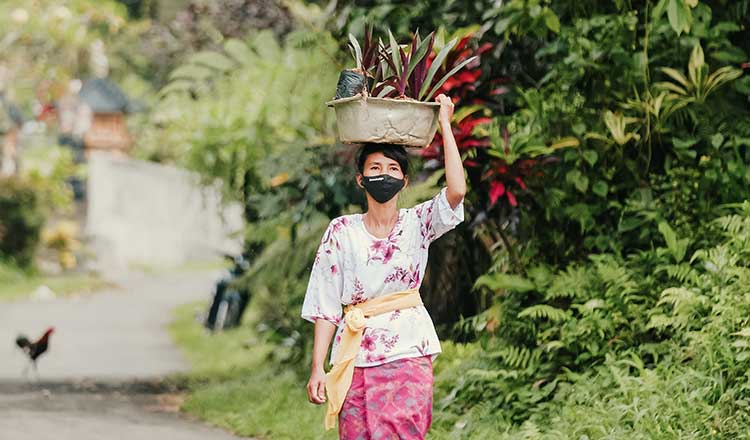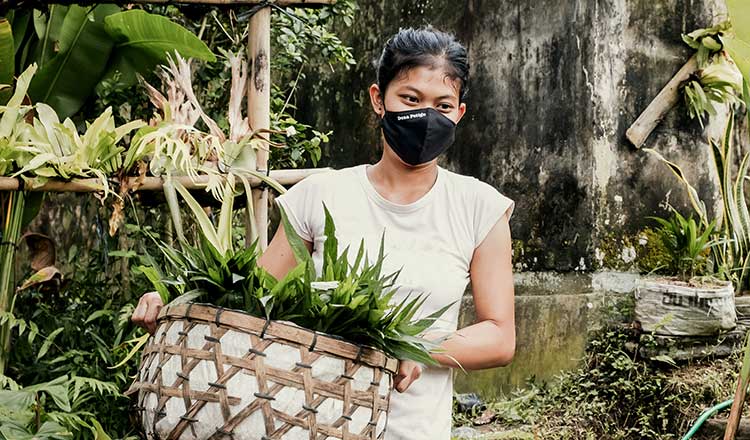Water stewardship in our tobacco supply chain
Risk assessment
Our global water risk assessment, conducted annually using the World Resources Institute’s Aqueduct risk-mapping tool, analyzes physical water risks in all the tobacco-growing areas from which we source, and forecasts patterns likely to emerge in coming years.
Globally, the 2020 assessment revealed that most tobacco-growing areas (80 percent) showed a “medium to high,” “high,” or “extremely high” level of physical risk. We observed a significant increase in “high” and “extremely high” risk levels (from 14 percent in 2019 to 40 percent in 2020), with climate change being one of the main factors. These regions are at risk of water scarcity, flooding, and water pollution. This assessment is not tailored to tobacco-growing areas; rather, it is based on geographic regions, so the risk factors reflect a more complex scenario than tobacco cultivation alone. For instance, the analysis shows that tobacco-growing areas in India, South Africa, and Turkey are at higher risk for baseline water stress and upstream land use. Other risk factors reviewed include groundwater table decline, flood occurrence, downstream water impact, and seasonal variability. Each of these influences the availability of water for agriculture and community use.
In addition to our global risk assessments, we conducted local assessments in 2020 in Brazil, China, Indonesia, Italy, Pakistan, and Spain. For these, we considered locally available data, existing supplier knowledge of risks, and local insights and contextual factors. Among other results from 2020, a framework for action was recommended in Pakistan to reduce the risk of flooding and improve water governance. In Indonesia, the assessment led to recommendations regarding downstream water impact and irrigation availability. We use these assessments to identify the areas in which we can have the greatest impact. Since we began conducting local risk assessments in 2018, we have completed 23 in total, with the goal of completing one for every tobacco-growing area by 2025.
We also built internal capabilities in 2020 to allow us to run both global and local risk assessments in-house. We used targeted online sessions to train all suppliers and regional colleagues involved in water management in tobacco agriculture on the updated methodology. This will improve our understanding of potential risks and the implementation of mitigation plans. It also allows us to conduct risk assessments more frequently and apply changes quickly should local conditions require prompt intervention.

In this chapter
- Water stewardship in our tobacco supply chain
- Water stewardship in manufacturing
- Next steps
Continuous improvement in our strategic approach
Throughout 2020, we enhanced our water stewardship strategy. Drawing on the experience and knowledge acquired through our risk assessments, we focused on developing guidance for applying a landscape approach to water optimization projects.
As a result of this work, we have established a new target for 2030: Optimizing at least 10 million cubic meters (m3) of water in our tobacco-growing areas through projects pertaining to use efficiency, water recharge, and the protection of natural areas, including (but not limited to) wetlands and rivers. Our new science-based approach and target will generate volumetric water benefits through farm- and landscape-level interventions, leveraging our on-the-ground presence in collaboration with our suppliers and farm stakeholders. To measure our impact, we will use the internationally recognized Volumetric Water Benefit Accounting methodology published by the World Resources Institute (WRI). The projects we develop will align with the risk assessments discussed in the previous section.
We will start implementing this strategy in 2021 and will validate our impact at the end of the year with a dedicated external verification of our reported progress.
Irrigation in agriculture
Globally, irrigation is at the core of water stewardship in agriculture. Within our industry, the quantity, quality, and timing of water availability through rainfall and irrigation all impact the growth of the tobacco plant. For about 60 percent of the farmland in our supply chain, the rain season is synced to the growing season, and so the crops are rain-fed during the open field stage. Where we use irrigation, we dedicate specific attention to the risk of baseline water stress when conducting local risk assessments. Irrigation accounts for around half of the water used to grow the tobacco we source, with an average of 307 m3 of water employed per ton of tobacco produced in 2020.
In absolute terms, the total water requirement related to our purchased tobacco volume is gradually decreasing. As a result of climate change, we expect irrigation needs to increase in terms of intensity (water required per ton of tobacco produced).
Irrigation systems leverage different technologies depending on the local contexts, needs, and resource availability. Tropical countries typically use open-air channel irrigation, while in the Veneto region of Italy, for instance, highly efficient drip-irrigation systems are used to grow about 98 percent of the tobacco we purchase.
Precision irrigation through cutting-edge technology helps us to reduce water use. In 2020, we ran a pilot project in Argentina, where water-intensive flood irrigation is still widely used. Our aim is to switch to drip irrigation there, which we estimate could reduce our water consumption by more than 50 percent. In Italy, we have been trialing optimization technologies that guide the most efficient use of irrigation water. The end product will be a decision support system that, after testing, will be made available to our supply chain to scale up water efficiency at the tobacco landscape level. Further trials will be needed before we can estimate the impact of irrigation optimization. Still, we are hopeful that this is a tool we can leverage more broadly in the future. Pilot studies will continue in 2021 to determine which locations will benefit most from irrigation switches.
Farmers who diversify must also understand the water demands of alternative crops. We work with them to analyze crop-specific water use and to facilitate the transition to new crops by maximizing efficiency while monitoring the environmental impact. Learn more about this work here.
Water quality
When misused, crop protection agents (CPAs) and fertilizers can pollute the local environment. While CPAs protect crops and fertilizers improve crop yield, these chemicals can enter the groundwater or watercourses, impacting aquifers and aquatic ecosystems.
We have a global integrated pest management program in place to reduce the unnecessary use of pesticides, promote less hazardous alternatives, and manage both appropriately. Field technicians are key to achieving our goals. Their interventions improve pesticide and fertilizer management as part of our GAP program. For more information, see our biodiversity section.
Performance highlights
Water stewardship in manufacturing
Risk assessment
In 2020, we conducted a global water risk assessment of all our direct operations, including our manufacturing centers, warehouses, and offices. Employing the WRI Aqueduct Water Risk Atlas, the assessment targeted physical risks (for example, water supply, drought, water stress, flood, and water quality). Through the assessment, we identified and prioritized four factories—three in Europe and one in Asia—shown to have high criticality and water risk. Specifically:
- Drought: Three European factories are at high risk.
- Water stress: Two of the above factories are in a high-risk area.
- Riverine flood: One factory in Asia is in a high-risk area.
Water efficiency in manufacturing
Manufacturing cigarettes and consumables for our smoke-free products accounts for six percent of our total water footprint, amounting to around 3.38 million cubic meters in 2020. We had set a target to achieve a water ratio—water withdrawn per million cigarettes—of 4.4 in 2020. We exceeded it, achieving 4.2 by the end of the year; we are now aiming to achieve a water ratio of 3.1 by 2022.
Water management within our factories entails deploying cost-effective water and wastewater technologies to maintain water quality and reduce consumption. Most of our factory water is sourced from municipalities and groundwater. It is used for cleaning and cooling, and to increase tobacco moisture. We use the WRI Aqueduct tool to identify factories located in geographies facing water stress and account for the water withdrawn from these sites. These assessments allow us to prioritize the factories at which we will implement water-efficiency interventions. In 2020, 53 percent of our direct factory water withdrawals were from water-stressed areas (2019: 54 percent).
By 2025, PMI aspires for its smoke-free products to account for at least 30 percent of total shipment volume, which will impact water use. Compared with conventional cigarettes, producing smoke-free products consumables is around five times more water-intensive (meaning that five times more water is required per ton of tobacco produced), so we seek to make our production processes more efficient.
Zero-loss mindset
We continuously work to improve our processes, invest in novel technologies, and raise awareness among our employees as part of our zero-loss mindset. Among other initiatives, we ran a 16-week accelerator program called Run to Target (RTT) in 2020 within our integrated facility management system. RTT is a way of working that fosters stability, reliability, and predictability in our operating processes to improve performance. It includes the setting of daily targets and monitoring at much tighter intervals.
In 2020, the RTT program ran in 32 of our 39 factories, involving over 6,000 employees trained to identify, assess, and eliminate losses. The daily monitoring of water consumption helped us to detect and remedy issues. For example, in Switzerland, quickly correcting an issue with an automatic valve allowed us to avoid the loss of 1,500 m3 of water that would have occurred had we maintained monthly monitoring. In Brazil, we avoided a loss of 350 m3 of water per month by quickly detecting a leak via daily monitoring. Overall, the deployment of RTT contributed to a 13.5 percent reduction in water consumption in 2020, equating to over 542,800 m3 of water saved, as compared with the previous year.
Water and wastewater quality
Water quality plays a vital role in our operations. At our manufacturing sites, high-quality fresh water is used for WASH services, landscape watering, and manufacturing processes, including the preparation of flavors and liquid products. Good quality fresh water is also critical in the manufacturing of our smoke-free products, which will represent an increasing proportion of PMI’s product portfolio in coming years. PMI expects its direct dependency on water to increase as we continue to transition to RRP products, which require more water-intensive manufacturing processes. To reduce water dependency in the long term, we are implementing technologies and efficiency initiatives to recycle and reuse water at our manufacturing facilities. These technologies include reverse osmosis and electrode ionization.
The monitoring of wastewater quality is standard procedure at our manufacturing sites. We conduct sampling following recognized protocols to measure standard effluent parameters. Although we conduct some laboratory analysis internally, most is handled externally by accredited labs. Our certified environmental management systems help our sites to demonstrate compliance with current and future statutory and regulatory requirements associated with water discharge.
As part of our water strategy, we will progressively increase the number of parameters controlled and online measurements recorded at all our sites.
Alliance for Water Stewardship
Next steps
We are exploring the possibility of starting an integrated global water risk assessment that covers every aspect of our value chain: Tobacco farming, manufacturing, and procurement. And we plan to run internal local risk assessments for leaf.
Beginning in 2021, we plan to start implementing our enhanced water stewardship strategy for our tobacco supply chain. We will apply rigorous external methodologies to track progress toward our target of 10 million cubic meters of water optimized by 2030.
We will continue to certify five to 10 factories a year until all of these facilities are AWS-certified (no later than 2025). In 2021, we are targeting five new sites.
We will implement additional efficiency and water-reuse projects at our factories as we invest further in water technologies and pilot new projects, and we will detail our progress in future reports.
This online content about our Integrated Report should be read in conjunction with PMI’s 2020 Integrated Report. The information and data presented here cover the 2020 calendar year or reflect status at December 31, 2020, worldwide, unless otherwise indicated. Where not specified, data come from PMI estimates. Please also refer to 'About this report' on page 3 of the 2020 Integrated Report for more information. Aspirational targets and goals do not constitute financial projections, and achievement of future results is subject to risks, uncertainties and inaccurate assumptions, as outlined in our forward-looking and cautionary statements on page 145. In the 2020 Integrated Report and in related communications, the terms “materiality,” “material,” and similar terms, when used in the context of economic, environmental, and social topics, are defined in the referenced sustainability standards and are not meant to correspond to the concept of materiality under the U.S. securities laws and/or disclosures required by the U.S. Securities and Exchange Commission.




